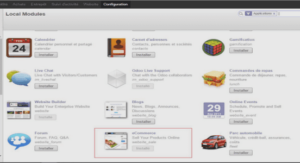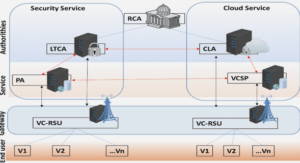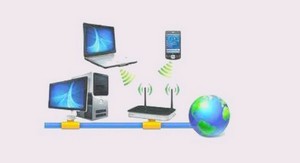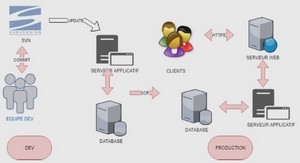The ever-increasing mobile traffic in recent years has induced service providers and telecommunications industries to develop new techniques and designs to provide higher data rates with guaranteed Quality-of-Service (QoS) and smaller prices (CISCO, 2015) for their customers in their everyday cellular communications. Relying solely on the traditional cellular networking cannot provide these qualities to the users. Therefore, in the last decade, providers and industrial telecommunication companies have developed new techniques and designs, such as cognitive radio (Mitola and Maguire, 1999; Liang et al., 2008), Femtocells (Chandrasekhar et al., 2008; Claussen et al., 2008), Device-to-Device (D2D) communications (Doppler et al., 2009; Janis et al., 2009; Doppler et al., 2011, 2010), Carrier Aggregation (CA) (Yuan et al., 2010), Coordinated Multi-Point (CoMP) (Irmer et al., 2011), Relay-Enhanced Networks (REN) (Salem et al., 2010), and Heterogeneous Networks (HetNet) (Damnjanovic et al., 2011) for 4th-generation (4G) Long Term Evolution (LTE), LTE–Advanced (LTE-A), and 5th-Generation (5G) systems. These schemes provide users with more capabilities on their User Equipments (UEs), much higher data rates and less latency (Osseiran et al., 2011; Asadi et al., 2014; Andrews et al., 2014; Li and Guo, 2014; Mumtaz and Rodriguez, 2014; Song et al., 2015).
Such a transmission provides four types of gains (Lei et al., 2012; da S. Rêgo et al., 2012; Phunchongharn et al., 2013; Asadi et al., 2014; Mumtaz and Rodriguez, 2014; Song et al., 2015; Panagopoulos, 2015):
• Proximity gain: where the short range communication using a D2D link enables high bit rates, low delays, and low power-consumption;
• Hop gain: where D2D transmission uses one hop rather than two hops (i.e. communicating via evolved Node-B (eNB) in which case both Up-Link (UL) and Down-Link (DL) resources are used);
• Reuse gain: where D2D and cellular links can simultaneously share the same radio resources;
• Pairing gain: which facilitates new types of wireless local-area services.
There are three possible Transmission Modes (TM) for D2D enabled UEs: reuse, dedicated, and cellular modes. The first two TMs are using direct transmission between paired UEs, while the last is the traditional cellular transmission. In the reuse mode the same frequency resource is reused by both D2D paired UEs and other cellular transmission in the network, which causes interference at the receivers. However, in the dedicated and cellular modes different resources are dedicated to each D2D transmission and cellular transmission, hence no interference appears at receivers. In order to start communication, D2D UEs should decide among these three different TMs (Doppler et al., 2010; Liu et al., 2012b,a; Song et al., 2015; Panagopoulos, 2015; Wang and Tang, 2016; Huang et al., 2016), or they could also apply a mixed mode mechanism in which each D2D link can utilize multiple modes through mode switching or resource multiplexing (Feng et al., 2015; Tang and Ding, 2016).
For single mode selection, the decision is made periodically based on a specific criterion, such as the overall throughput of the network. In other words, the TM which gives the highest throughput is selected. It has been shown that for a fixed transmission power, channel conditions, and noise power, the TM to be selected depends on the location of entities in the network (Morattab et al., 2015).
In our recent work (Morattab et al., 2015), we studied the possible mode selection technique for a network where entities use Multiple-Input-Multiple-Output (MIMO) techniques. In that work, we observed that there are certain regions in the network that if the cellular UE is located there, always a specific TM is selected by paired D2D UEs. Such regions were also shown in (Doppler et al., 2009) implicitly where the main objective was to maximize the overall throughput of the network through mode selection for single antenna UEs in the network. In both studies, the resulted map is achieved numerically by calculating the throughput for each TM at a specific point in the network, and the TM that gives the highest overall throughput in this point is indicated.
Mobility Management and Handover
Due to the limited transmission range in D2D communication, a handover mechanism is required to take the responsibility for a possible TM change between the paired D2D UEs and to achieve a seamless communications for the paired D2D UEs when the mobility of the entities in the network, which are synchronized in resource allocation and mode selection process, reduces the performance of the network.
In this work, we use the results from the mode selection map derivation process for handover mechanism. This requires to first identify proper decision parameters and then calculate their value as a function of network variables. Another issue is the presentation of the vertical handover to include the decision parameters as well as practical limitations of the transition between modes. Finally, to evaluate the performance of the handover algorithm some performance metrics should be presented and be calculated.
For mode selection derivation, the overall throughput of the network for the reuse, dedicated, and cellular modes is calculated and presented in three different equations. When the channel’s model is LoS path-loss, to find the mode selection map, these equations are equalized two by two and the resulted equation is solved. For the fading channel scenario, due to the probabilistic variation of the channels the expectation of the network overall throughput is calculated for three TMs and the resulted functions are equalized two by two and solved. For the LoS pathloss scenario we derive the map for three different cases when UEc, UEs, and UEd are moving. For the fading scenario we develop our analytical approach for the case of UEc moving in the network.
INTRODUCTION |





